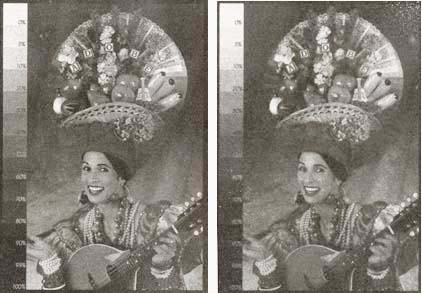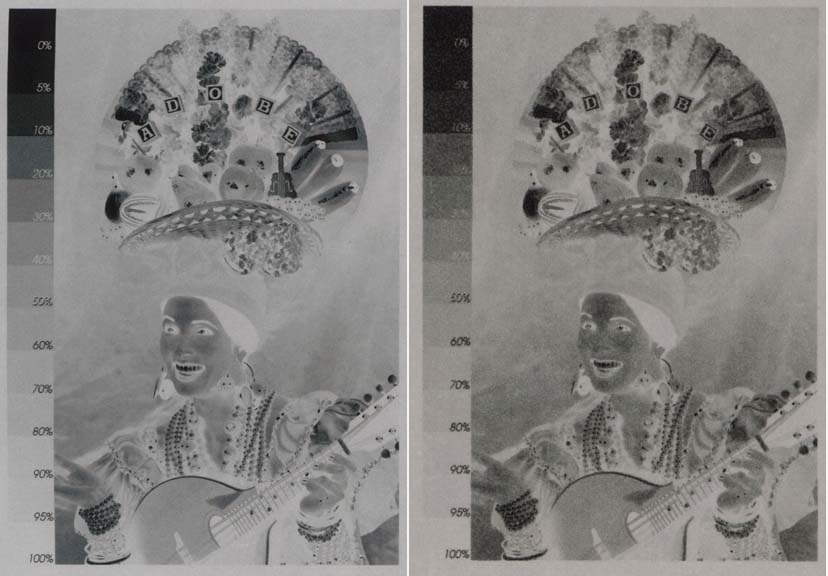

Left: Inkjet transparency negative. Lamp black. 1 gum/pigment: 1 saturated ammonium dichromate.
Right: Inkjet paper negative (Epson Presentation Paper Matte), oiled with baby oil. Same emulsion as above. Slight splotchiness most likely due to printing before the oil was completely dry on the negative. Someday I'm going to reprint this with the dried negative so you can properly evaluate the smoothness of the tones when the negative is properly dried, but for now you have to use your imagination.
Actual size.
Choosing a good paper. Not all papers work equally well. Below: paper negatives from two different kinds of paper:

Left: Epson Presentation Paper (same paper that used to be called Epson Photo Quality Inkjet Paper), oiled with baby oil (used to print image on right above) I enlarged the negative considerably so you can see how smooth the tones are (also confirming that the blotchiness in the print above didn't come from the negative but from excess oil). Right: HP Color Inkjet Paper, oiled with mineral oil. I added this for comparison. This paper is like a heavy typing paper (although the Presentation Paper is actually heavier, 27 pounds vs 24 pounds) and didn't take the oil well; there seemed to be some particulate matter in the paper that simply would not absorb the oil no matter how hard I rubbed, resulting in a very grainy negative.
Summary recommendations: I find that Epson Presentation Paper, oiled with baby oil, makes a very good paper negative. I used to use mineral oil, but it's very thick and requires a lot of rubbing to penetrate the paper completely; baby oil is a watered down version of mineral oil (with that "baby" fragrance added) that is much more easily absorbed into the paper, so oiling is faster and easier. I wish I could remember the name of the person who gave me that idea and give him credit for it, but I can't.